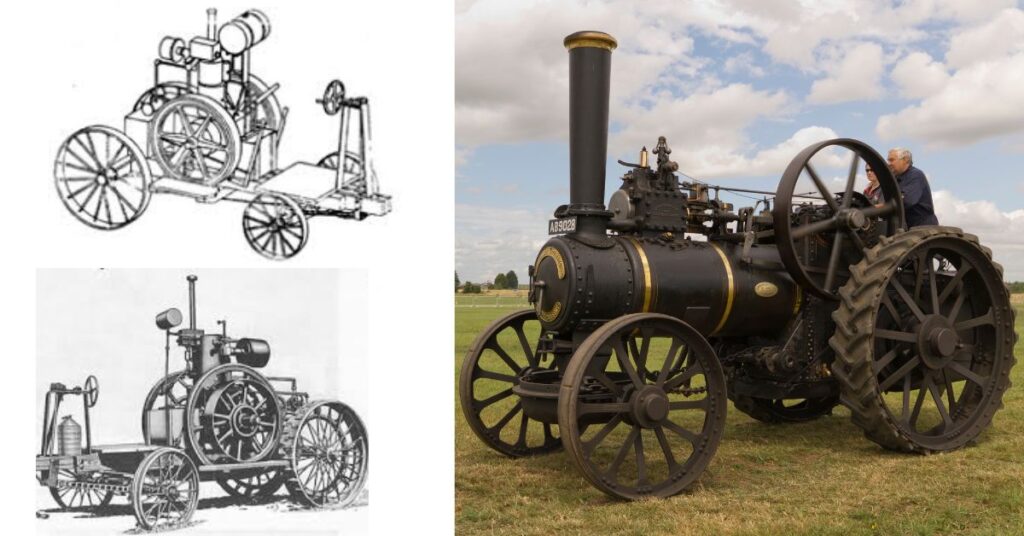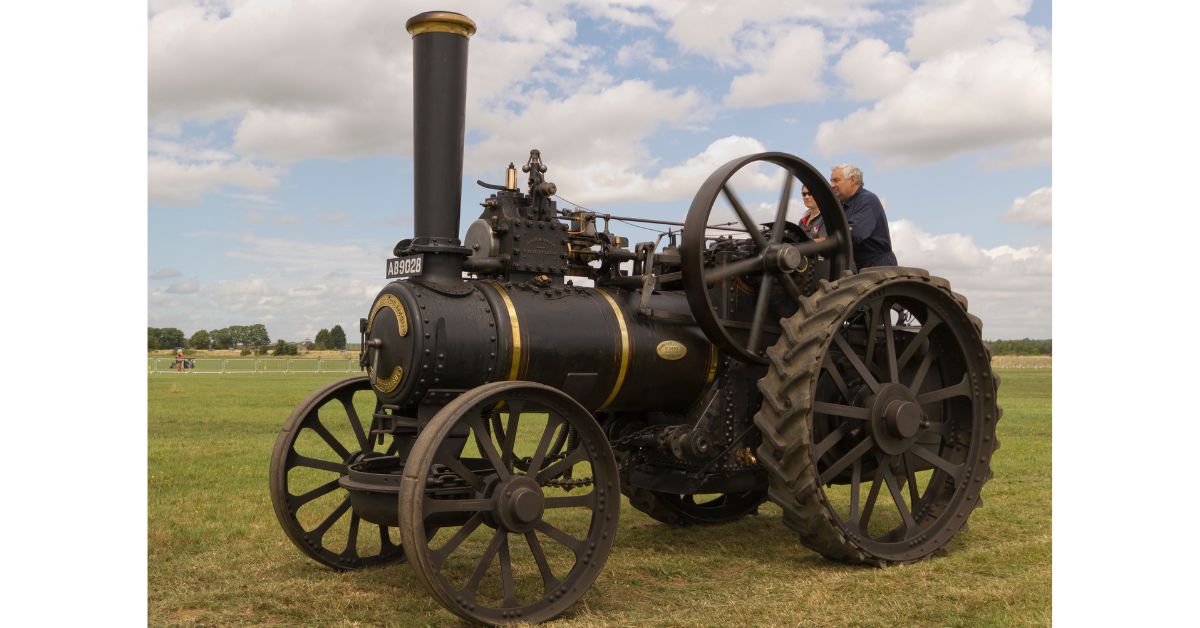Throughout history, there have been countless inventions. They have reshaped and revolutionized various industries. One such invention that holds tremendous significance in the field of agriculture is the tractor. This mighty workhorse brought unparalleled efficiency, power, and productivity to the once labor-intensive task of tilling the land. But who can be credited with the creation of the very first tractor?
Unraveling the origins of this groundbreaking machine takes us back to the late 19th century. It was a time when the world was undergoing significant industrialization and technological advancements. It was during this era that inventors and engineers were driven by a common ambition. They created a powerful, mechanized device. It was capable of revolutionizing farming practices and alleviating the physical strain experienced by farmers.
In this blog, we’ll uncover the origins of this groundbreaking machine. Join us as we explore the remarkable individual who laid the foundation for modern agricultural machinery. It ultimately led to unprecedented advancements in global food production.
Early agricultural tools and equipment
Early agricultural tools and equipment were simple. They were yet effective in cultivating the land. Farmers used simple tools like sticks, hoes, and shovels to prepare the soil, plant seeds, and harvest crops. As agriculture evolved, so did the tools and equipment used by farmers.
In ancient civilizations like Egypt and Mesopotamia, farmers used wooden plows with animal horns as blades to till the soil. In the Middle Ages, plows with iron blades pulled by oxen or horses became common. The invention of the seed drill in the 18th century allowed for more precise planting. Similarly, the mechanization of harvesting with the combine harvester in the late 19th century significantly increased productivity.
Despite these advances, farming was still a labor-intensive and time-consuming process. It has little room for error or experimentation. This all changed with the advent of the steam engine and the rise of the traction engine. In the next section, we’ll explore how these innovations set the stage for the creation of the world’s first tractor.
The invention of the steam engine
The invention of the steam engine in the 18th century revolutionized transportation and manufacturing. Steam engines were first used to power threshing machines. It was used to separate the grain from the straw. Later on, it was also used to power plows and other farm machinery.
The steam traction engine is a type of steam engine on wheels. It was first developed in the mid-19th century. It quickly gained popularity as a source of power for agricultural machinery. These massive machines were used to pull plows, threshers, and other farm implements. It greatly reduced the need for animal labor and increased productivity.
One of the earliest steam-powered agricultural machines was the steam plow. It was invented by John Fowler in the 1860s. The steam plow used a steam engine to power the plow. It allowed for deeper and faster plowing than was possible with animal power alone. However, steam plows were expensive and difficult to operate. They were never widely adopted by farmers.
Despite these challenges, the steam engine paved the way for the development of the first gasoline-powered tractor. In the next section, we’ll explore how this revolutionary machine came to be.
The rise of the traction engine
The rise of the traction engine in the mid-19th century marked a turning point in the history of agriculture. These powerful steam engines on wheels could pull heavy loads across fields and up hills, greatly increasing the productivity of farmers.
One of the most famous traction engines of the era was Fowler’s “Lion,”. It was a massive machine that could pull plows, harrows, and other farm implements with ease. Another notable example was the “Big Four,” built by John Fowler & Co. in the 1880s. It was capable of pulling up to 24 plows at once.

Traction engines were used for a variety of tasks on the farm. It includes plowing, planting, and harvesting. They were especially useful for threshing, which involved separating grain from straw after the harvest. Before the advent of the combine harvester, threshing was a time-consuming and labor-intensive process. A team of workers was used to beat the grain with flails or sticks. With the arrival of the traction engine-powered threshing machine, farmers could complete the job in a fraction of the time with just a few workers.
The traction engine was a marvel of its time. It was also expensive and difficult to operate. Farmers were always on the lookout for more affordable and efficient sources of power for their machines. In the next section, we’ll explore the development of the first gasoline-powered tractor.
First gasoline-powered tractor
The first gasoline-powered tractor is credited to American engineer John Froelich. He built a prototype in 1892. Froelich’s invention was powered by a two-cylinder gasoline engine. It featured three steel wheels that allowed it to move easily over rough terrain.
Froelich’s tractor was an instant success. He soon began manufacturing them in large quantities. His invention was a vast improvement over existing steam-powered machines, which were expensive and difficult to operate.
Over the next few decades, other inventors improve upon Froelich’s design. It added features like multiple gears and four-wheel drive. One of the most successful early tractors was the Fordson, introduced by Henry Ford in 1917. The Fordson was affordable, easy to operate, and reliable, and it quickly became the most popular tractor in America.
The advent of the gasoline-powered tractor revolutionized agriculture, making it faster, more efficient, and more productive than ever before. Farmers could now plow, plant, and harvest their crops with just one machine, greatly reducing the need for manual labor. This allowed for larger farms and more food production, which helped feed a growing population.
Today, tractors continue to play a vital role in agriculture around the world. The evolution of agricultural tools and equipment has been a fascinating journey. It is driven by the ingenuity and perseverance of countless inventors and farmers.
The development of diesel tractors
Diesel tractors were developed in the early 20th century. They were an alternative to gasoline-powered tractors. Gasoline engines were reliable and relatively inexpensive. The major drawback was that they were not as efficient as diesel engines.
The first diesel engine was developed by German engineer Rudolf Diesel in the late 19th century. Diesel’s engine used a compression-ignition process to ignite the fuel. It doesn’t use a spark, which made it much more efficient than gasoline engines. In the early 20th century, diesel engines began to be used in trucks, ships, and other heavy machinery. It wasn’t long before they found their way into tractors.
One of the first diesel tractors was the International Harvester TD-40. It was introduced in the 1930s. The TD-40 was a crawler tractor with a diesel engine. It made it more powerful and efficient than gasoline-powered crawlers of the time. Other manufacturers soon followed suit, and diesel tractors quickly became the norm in agriculture.
Diesel tractors were particularly well-suited for heavy-duty tasks like plowing and hauling. They were mostly used where their high torque and low-end power were invaluable. They were also more fuel-efficient than gasoline tractors. It made them a popular choice for farmers looking to save money on fuel costs.
Advancements and Modern Innovations
The legacy of the first tractor continues to inspire innovation in agricultural machinery. Today’s tractors incorporate cutting-edge technologies to further enhance efficiency and sustainability. GPS systems, computerized controls, and autonomous capabilities are revolutionizing farming operations. Autonomous tractors, in particular, are capable of operating without a human driver. It utilizes AI and machine learning algorithms to perform tasks with precision.
Conclusion:
The legacy of the first tractor is undeniable. The evolution of tractor design has revolutionized agriculture and changed the world. The first tractor paved the way for a new era of mechanized farming. It allowed farmers to work more efficiently, cover more ground, and produce more food than ever before. It transformed agriculture from a labor-intensive and time-consuming task to a modern one. The legacy of the first tractor is also evident in the continued innovation and development of agricultural machinery. Today’s tractors are equipped with the latest technologies. It includes such as GPS, computerized control systems, and autonomous capabilities. They have made farming operations even more efficient and sustainable.
FAQs
Who invented the first tractor?
The first tractor was invented by various individuals during the 19th century. Some of the key inventors include Richard Trevithick, Charles Burrell, and John Fowler.
What was the first tractor used for?
The first tractors were primarily used for agricultural tasks such as plowing, planting, and harvesting. Later models were also used for transportation, construction, and other tasks.
When was the first gasoline-powered tractor invented?
The first gasoline-powered tractor was invented in 1892 by John Froelich.
When were diesel tractors first introduced?
Diesel tractors were first introduced in the 1930s.
What is the most advanced type of tractor today?
The most advanced type of tractor today is the autonomous tractor, which is capable of operating without a human driver.
How have tractors impacted agriculture?
Tractors have greatly impacted agriculture by increasing efficiency, productivity, and reliability. They have made it possible for farmers to work more efficiently, cover more ground, and produce more food than ever before.
What is the future of tractor design?
The future of tractor design is likely to focus on even greater efficiency, sustainability, and autonomy. Technologies such as artificial intelligence, machine learning, and precision agriculture are likely to play an increasingly important role in the design of future tractors.

